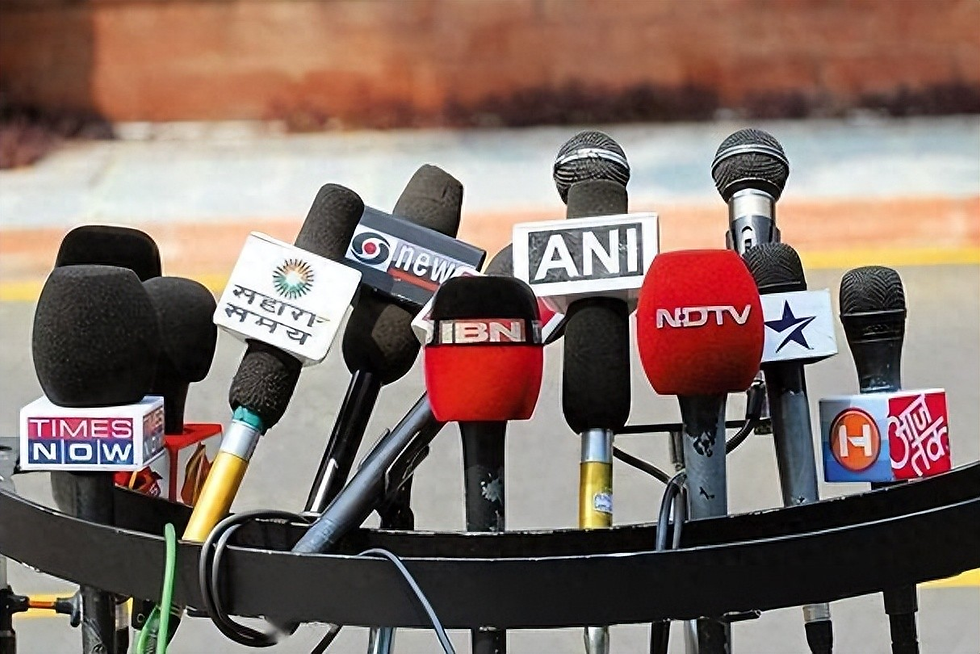Modi's confidence and the dream of internationalizing the Indian rupee.
- CosDream News

- Oct 10, 2024
- 3 min read
In the international currency market, fluctuations rise and fall like tides, creating vast waves.
Recently, the BRICS countries launched a new payment system aimed at challenging the dominance of the dollar and building a fairer and more reciprocal financial environment.
This undoubtedly sends a signal of challenge to the global economy.
However, amidst this historic change, India faces a cold shoulder, with the rupee being "swiftly abandoned," prompting the question: where is Modi's vision?
When discussing Prime Minister Modi, his ambition is the first thing that comes to mind.
Since taking office, he has firmly believed that the rupee could hold a place on the international stage.
Yet, reality has dealt him a heavy blow. During the launch of the new payment system by BRICS, there was a clear indifference towards the rupee, contrasting sharply with the bright picture Modi painted.
Once, he confidently vowed to establish India as one of the global financial centers, but now the rupee faces the fate of marginalization, raising concerns about the effectiveness of Modi's strategy.
The BRICS nations' rejection of the rupee is not without reason.
Factors such as insufficient liquidity, volatility in the foreign exchange market, and the fragile structure of India's economy render the rupee unattractive in the international market.
Additionally, the competing interests among BRICS countries, each with different considerations, have failed to translate their apparent willingness to cooperate into support for India.
All these adverse factors undoubtedly place immense pressure on Modi.
BRICS originally hoped to establish an economy based on mutual trust and resource sharing, but in practice, due to internal and external factors, the future of the rupee remains overshadowed.
This also raises questions about Modi's policy implementation and the resilience of the national economy.
Meanwhile, the yuan has demonstrated a powerful international status in this context.
Despite facing U.S. sanctions and pressures, China's economic scale and its significance in global supply chains have strengthened the yuan's position in international transactions.
It is not only widely used in the Asia-Pacific region but is also gradually forming an influence in markets like Africa and Latin America.
As BRICS countries reconstruct the financial order, the yuan, as a stable and secure currency option, is bound to attract significant attention.
In contrast, whether the rupee can stand out in this competition has become an unresolved question.
Now, let's look at India's economic situation.
For a long time, India has faced serious wealth disparities and weak infrastructure issues.
Although India has a large market and rich human capital compared to China during the early reform period, the quality of its economic growth has consistently fallen short.
Insufficient education, healthcare, and infrastructure directly constrain economic development.
In such an environment, relying solely on external forces for advancement is unlikely to achieve significant economic leaps and may instead entangle India in more international issues.
The future of India's economy is unclear, with challenges facing Modi not only arising from external pressures but also from deep-rooted internal problems.
The relationship between the Modi government and the United States is also a topic worth pondering.
The two countries maintain close cooperation in trade and security, but as U.S. domestic politics shift, India finds it difficult to escape a passive position.
U.S. pressures on India, such as imposing tariffs and restricting technology transfers, have repeatedly hindered India in the international market, while BRICS' choice to abandon the rupee at this time is undoubtedly a mockery of India's diplomacy.
Modi may hope to leverage U.S. support to internationalize the rupee, but the reality is clearly more complex.
The influence of the U.S. on India and India's fragile position in global affairs add layers of uncertainty to this endeavor.
The launch of the BRICS payment system serves as a wake-up call for India.
In pursuing the dream of rupee internationalization, Modi must seriously reflect on the direction of his policies and the strength of the economy.
Facing the ever-changing international landscape, finding new development paths and enhancing the country's endogenous motivation are urgent issues he must contemplate.
In the future, whether India can overcome these challenges and catch up will depend not only on policy adjustments but also on fundamentally improving the domestic economic environment and enhancing citizens' sense of gain and happiness.
All these developments create a sense of tension, as if the current fluctuations in the world are a microcosm of the times.
The public's expectations for the future will be the ultimate test for Modi.
If the fate of the nation and its currency is not changed, it will undoubtedly lead to regret.









Comments